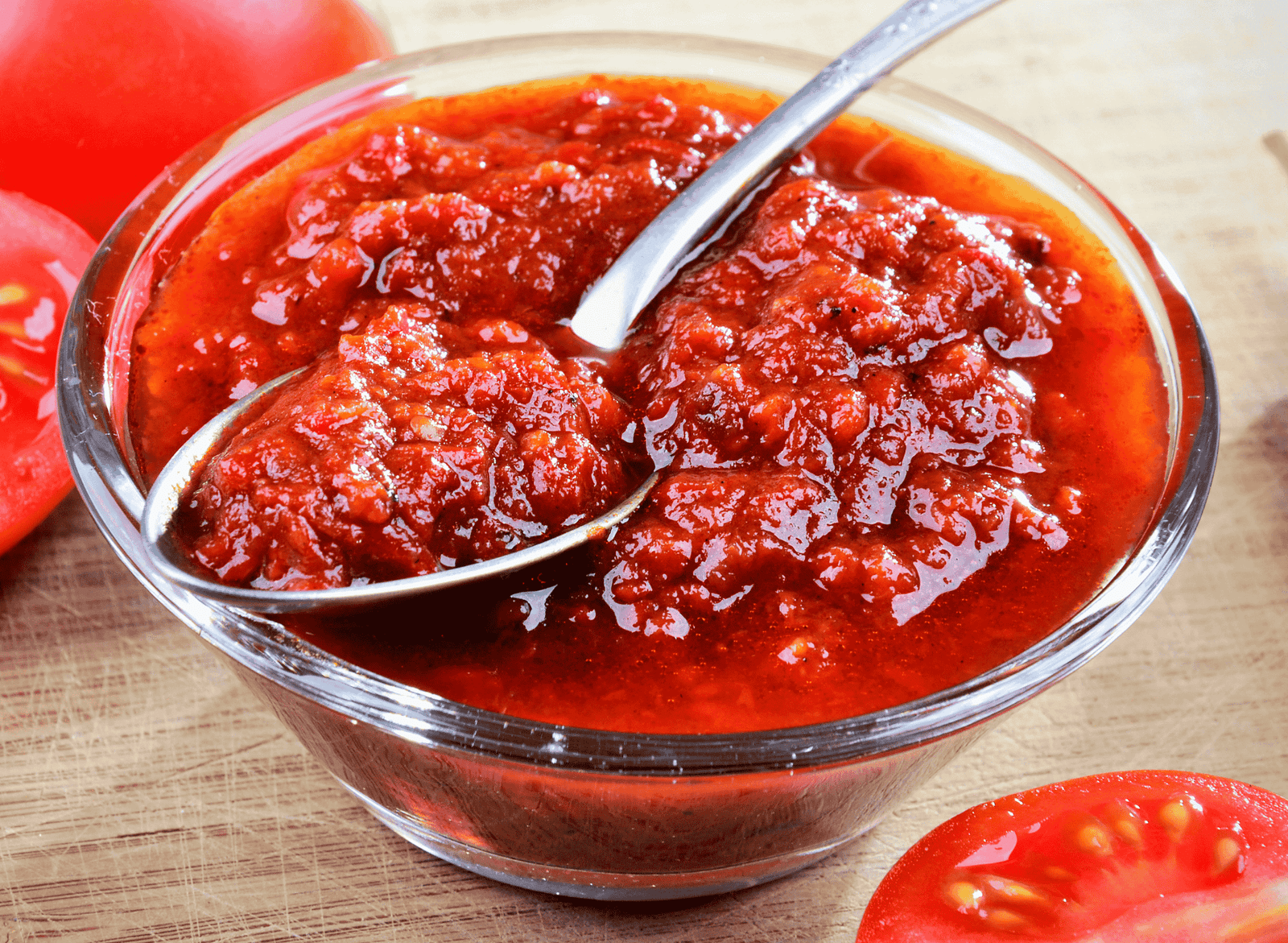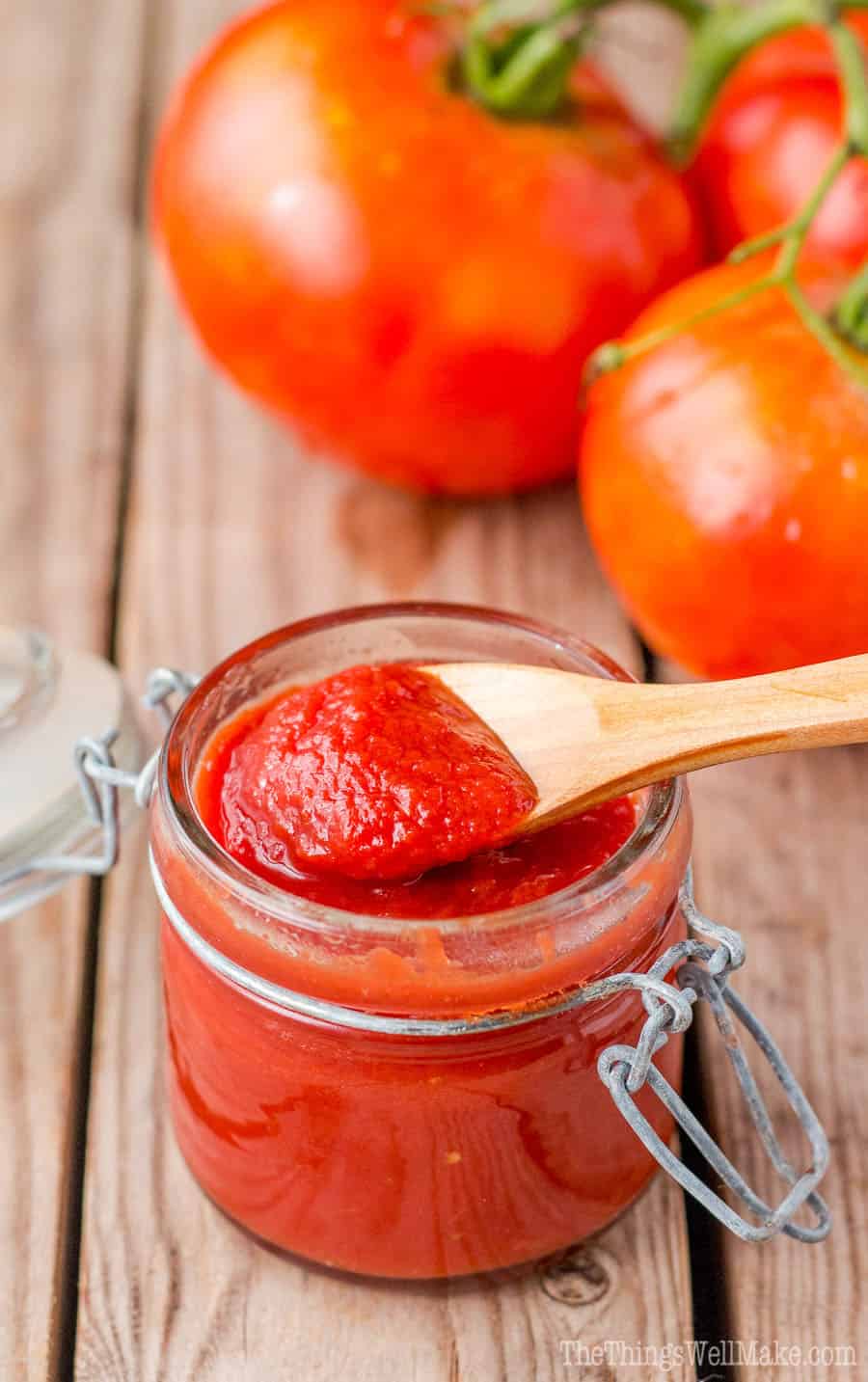
Unleashing the Sunshine: Crafting the Perfect Bush Tomato Paste Recipe
The humble tomato, a staple in kitchens worldwide, often finds itself transformed into a rich, concentrated paste that forms the bedrock of countless culinary creations. While conventional tomato paste is readily available, there’s a growing appreciation for the unique flavor profile and vibrant character of bush tomatoes. These smaller, often more intensely flavored varieties, bursting with sunshine, can elevate your homemade tomato paste from ordinary to extraordinary.
This article delves into the art of crafting your own bush tomato paste, exploring why it’s worth the effort, the best types of bush tomatoes to use, and a comprehensive recipe to guide you. We’ll also touch upon the benefits of making your paste from scratch and offer some creative ways to utilize your sun-kissed creation.
Why Make Your Own Bush Tomato Paste?

The commercial tomato paste you find on supermarket shelves is often made from a blend of tomato varieties, sometimes bred for high yields and uniformity rather than peak flavor. While convenient, these pastes can sometimes lack the depth and complexity that truly shines.
Making your own bush tomato paste offers several compelling advantages:
- Unparalleled Flavor: Bush tomatoes, by their very nature, tend to be smaller and have a higher skin-to-flesh ratio. This often translates to a more concentrated, sweeter, and sometimes tangier flavor profile. Imagine the concentrated essence of sun-ripened fruit – that’s the magic you can capture.
- Control Over Ingredients: When you make your paste at home, you are in complete control of what goes into it. No added sugars, preservatives, or artificial ingredients. Just pure, unadulterated tomato goodness.
- Reduced Waste: If you have a garden overflowing with bush tomatoes, making paste is an excellent way to preserve your harvest and prevent them from going to waste.
- Culinary Versatility: Homemade bush tomato paste is incredibly versatile. Its intense flavor can add a delicious depth to sauces, stews, soups, marinades, dips, and even baked goods.
- The Satisfaction of Homemade: There’s an undeniable sense of accomplishment and pride that comes from creating a fundamental ingredient like tomato paste from scratch.

The Stars of the Show: Choosing Your Bush Tomatoes
The term "bush tomato" encompasses a wide array of smaller tomato varieties that are typically more compact and prolific producers than their vining counterparts. For the best results in your paste, opt for varieties known for their rich flavor and relatively low water content. Some excellent choices include:
- Roma (Plum) Tomatoes: While not exclusively a "bush" variety, many Roma types grow in a more compact, bush-like fashion. They are prized for their meaty texture and few seeds, making them ideal for paste.
- San Marzano Tomatoes: Similar to Romas, San Marzanos are Italian plum tomatoes renowned for their sweet, less acidic flavor and meaty flesh.
- Cherry Tomatoes (certain varieties): While many cherry tomatoes are juicy and sweet, some varieties, like grape tomatoes or certain heirloom cherry types, can have a denser flesh that works well for paste. Look for those with a more concentrated flavor.
- Grape Tomatoes: These small, oblong tomatoes are often sweeter and less watery than some other cherry varieties, making them a good candidate for paste.
- Heirloom Bush Varieties: Explore local farmers’ markets or seed catalogs for specific heirloom bush tomato varieties. Many of these are bred for exceptional flavor and unique characteristics. Look for descriptions that highlight "sweetness," "richness," or "intense flavor."
Tips for Selecting Tomatoes:
- Ripeness is Key: Choose only fully ripe, firm tomatoes. Overripe or bruised tomatoes can introduce off-flavors.
- Color: Aim for deep, uniform color, indicating peak ripeness and sugar content.
- Texture: The flesh should be dense and not overly watery.
The Art of Transformation: Making Bush Tomato Paste
The process of making tomato paste involves concentrating the tomato’s flavor by removing excess water. This can be done through various methods, each with its own advantages. We’ll focus on a method that balances flavor development with reasonable time investment.
Yield: Approximately 1-1.5 cups of paste
Prep time: 30 minutes
Cook time: 2-4 hours (depending on method)
Ingredients:
- 2 pounds (approximately 1 kg) ripe bush tomatoes (see recommendations above)
- 1 tablespoon olive oil (optional, for sautéing)
- 1/2 teaspoon salt (or to taste)
- Pinch of sugar (optional, to balance acidity if needed)
- Fresh herbs (optional, such as basil, oregano, or thyme – add a few sprigs during cooking)
Equipment:
- Large pot or Dutch oven
- Blender, immersion blender, or food processor
- Fine-mesh sieve (optional, for a smoother paste)
- Baking sheets (if using oven method)
- Sterilized jars or airtight containers for storage
Method 1: Stovetop Simmering (Classic Approach)
This is a tried-and-true method that allows for gradual evaporation and flavor development.
- Prepare the Tomatoes: Wash the bush tomatoes thoroughly. You can leave them whole, halve them, or quarter them depending on their size. For a more intense flavor, you can choose to peel them. To do this, score the bottom of each tomato with a shallow "X," blanch them in boiling water for 30-60 seconds, then plunge them into ice water. The skins should peel off easily. Remove any stems.
- Initial Cooking: In a large pot or Dutch oven, add the prepared tomatoes. If you like, you can sauté them for a few minutes in a tablespoon of olive oil over medium heat before adding them to the pot. This can enhance their flavor. Add the salt and any optional sugar or herb sprigs.
- Simmer and Break Down: Cover the pot and bring the tomatoes to a simmer over medium heat. Cook for about 15-20 minutes, stirring occasionally, until the tomatoes have softened and started to break down.
- Uncover and Reduce: Remove the lid and continue to simmer the tomatoes over low to medium-low heat. Stir frequently to prevent sticking. The goal is to evaporate the excess water, concentrating the tomato solids. This can take anywhere from 1.5 to 3 hours, depending on the juiciness of your tomatoes and the heat level. The mixture will gradually thicken.
- Blend: Once the tomatoes have reduced to a thick, pulpy consistency, carefully transfer them to a blender, or use an immersion blender directly in the pot (be cautious of splattering hot liquid). Blend until smooth. If you prefer a very smooth paste, you can pass the blended mixture through a fine-mesh sieve to remove any seeds or skins.
- Final Reduction (Optional but Recommended): For an even thicker, more intensely flavored paste, return the blended mixture to the pot and continue to cook uncovered over low heat, stirring constantly, until it reaches your desired consistency. It should be thick enough to hold its shape on a spoon. This final reduction can take another 30-60 minutes.
- Cool and Store: Let the tomato paste cool completely. Transfer it to sterilized jars or airtight containers.
Method 2: Oven Roasting (Intensified Flavor)
Roasting the tomatoes before making paste can bring out a deeper, sweeter, and more caramelized flavor.
- Prepare and Roast: Preheat your oven to 400°F (200°C). Wash and halve or quarter your bush tomatoes. Toss them with a tablespoon of olive oil, salt, and any optional herbs. Spread them in a single layer on baking sheets lined with parchment paper.
- Roast: Roast for 45-60 minutes, or until the tomatoes are softened, slightly shriveled, and beginning to caramelize around the edges.
- Simmer and Reduce: Transfer the roasted tomatoes (along with any juices from the baking sheet) to a pot or Dutch oven. If they seem very dry, add a splash of water or vegetable broth. Bring to a simmer and cook, uncovered, stirring occasionally, until the mixture has reduced to a thick pulp, about 30-60 minutes.
- Blend and Final Reduction: Blend the mixture until smooth (and sieve if desired). Return to the pot and continue to cook uncovered over low heat until the paste reaches your desired consistency, stirring constantly.
- Cool and Store: Let the tomato paste cool completely before transferring it to sterilized jars or airtight containers.
Storing Your Homemade Bush Tomato Paste
Proper storage is crucial to maintain the quality and shelf life of your homemade paste.
- Refrigeration: Once cooled, store your bush tomato paste in airtight containers or jars in the refrigerator. It should last for 2-3 weeks.
- Freezing: For longer storage, freeze the paste. You can freeze it in ice cube trays (about 1 tablespoon per cube) for easy portioning. Once frozen, transfer the cubes to a freezer-safe bag or container. Frozen paste can last for up to 6 months.
- Canning (Advanced): If you have experience with canning, you can preserve your tomato paste for longer shelf life. Ensure you follow safe canning practices and use appropriate processing times for tomato products.
Unleashing the Flavor: Creative Uses for Your Bush Tomato Paste
Your homemade bush tomato paste is a flavor powerhouse. Here are just a few ideas to get you started:
- Sauce Base: Use it as the foundation for pasta sauces, pizza sauces, or dipping sauces. Its concentrated flavor means you’ll need less of it.
- Soups and Stews: Add a spoonful to vegetable soups, lentil stews, or chili for an instant depth of flavor and a beautiful color.
- Marinades: Incorporate it into marinades for grilled meats, poultry, or vegetables.
- Dips and Spreads: Blend it with cream cheese, yogurt, or tahini for a flavorful dip.
- Braises: Add it to the liquid for braising meats, infusing them with rich tomato notes.
- Sandwich Spread: Mix with mayonnaise or aioli for a vibrant sandwich spread.
- Savory Baked Goods: A small amount can add a subtle savory depth to focaccia or savory muffins.
The Sunny Conclusion
Making your own bush tomato paste is a rewarding culinary adventure that unlocks a world of intense, sun-kissed flavor. By choosing the right tomatoes and following these simple steps, you can create a versatile ingredient that will elevate your cooking and bring a taste of summer to your table, no matter the season. So, gather those vibrant bush tomatoes, embrace the process, and savor the exceptional taste of homemade.
Listing of Recipes (within the article):
- Bush Tomato Paste Recipe (Stovetop Simmering Method)
- Bush Tomato Paste Recipe (Oven Roasting Method)

